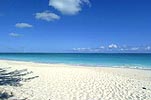

About Us Honeymoons or Couples Honeymoons or Couples
Family Holiday Packages 
Executive Luxury Safaris
Kenya Travel Guide
Kenya Holiday Reviews 
Hot Air Balloon Safaris
ATOL Financial Protection
|
CLIMBING MOUNT KILIMANJARO |
 |
 |
About The Mountain
Mount Kilimanjaro, the highest Mountain in Africa, is located in northern Tanzania (formerly called Tanganyika). It is located around 200 miles south of the equator. Mount Kilimanjaro, an extinct volcanic Mountain, is 19,341 feet in height.
Mount Kilimanjaro is located within the boundaries of Mount Kilimanjaro National Park. The National Park, 756 square kilometers is size, was originally established as a game reserve in the early 1900's. In 1921, the government of Tanganyika renamed the game reserve to a forest and game reserve. In 1957, the Tanganyika National Parks Authority with support from many local and international conservation organizations and interest groups formally proposed the establishment of a national parkat encompassed Mount Kilimanjaro. The area above 2700-meter contour was established as Kilimanjaro National Park and was officially opened for tourism in 1977. In 1989, the World Heritage Convention declared the Park a World Heritage site.
The People Of Tanzania And Peaks
Mount Kilimanjaro has 3 peaks: Shira Peak at 12,999 feet (3,962 meters), Mawenzi at 16,893 feet (5,149 meters), and Kibo at 19,341 feet (5,895 meters). In Tanzania, Kibo Peak is known as Uhuru Peak and old Tanganyika maps refer to the peak as Kaiser Spitze Peak; Mawenzi is referred to in old maps as Hans Meyer Peak.
The Chagga people have resided near the Mountain for centuries but were not responsible for naming Kilimanjaro; the Swahili of the coast were. Instead, the Chagga referred to the Mountain by its individual names, Kippoh ( kee-poh ) and Kimawenzi ( kee-mah-wen-zee ). Because the Mountain was snow capped and reflected light when the sun was shone, the name "Kilimanjaro" was created from the Kiswahili words "Mlima" (single hill) and "Ngara" (shine). Also, despite this naming convention is frequently agreed upon in East Africa, other communities like the Kikuyu and Maasai have their interpretations of what the name means and how it came about.
The Mountain's Vegetation
Mount Kilimanjaro's volcanic soil has promoted the growth of a variety of vegetation types on the Mountain. The following table represents the vegetation type and approximate percent coverage.
Forest Vegetation And Coverage In Percentage
Lower Zone - Grassland - 20%
Montane Zone - Forests - 21%
Heath and Moorland - Shrubs and Slim Trees - 19%
Alpine Desert Zone Lichens growth - 20%
Summit Zone Arctic Vegetation - 20%
Famous Mount Kilimanjaro Climbers
Although big mountains had been known to exist in Northern Tanzania, no one had actually traveled inland to actually account for it until 1800's. Mount Kilimanjaro had been thought to be the source of River Nile and a Mountain of mystery - the mystery being a snow capped Mountain in Africa. Africa was thought to be a continent of savages, thus stories about the continent were often down played. With colonization came European missionaries, who traveled inland to preach their religion.
1n 1846, Dr. Ludwig Krapf and Johann Rebmann landed at the coast of Kenya and set up a missionary at Rabai, close to the town of Mombasa. In 1849, both Krapf and Rebmann confirmed their sightings of the great Mountain on their trip inland. Reports about the Mountain were received by the Royal Geographical Society, which prompted a great debate about the accuracy, about the height and possibility of snow capped mountains in Africa.
In 1861, Richard Thornton attempted the first climb. The Mountain was new to him and thus had a difficult time penetrating through the second zone. Also the weather did not cooperate, which eventually forced him down.
In 1862, Otto Kersten and Baron Von der Decken attempted the climb. They climbed over 15,000 feet but were forced down because of bad weather. In 1887, Hans Meyer attempted the climb and was successful in reaching Kibo.
In 1889, Hans Meyer and Ludwig Purtscheller arranged an expedition to reach the summit of Kibo. It is stated that there were over 60 people in total including porters. Meyer and Purtscheller were successful in their climb. They named the summit Kaiser Wilhem Spitze, a record that is still displayed in many maps found in Tanzania, a former German colony.
In 1900's, many climbers attempted and succeeded in completing Kilimanjaro, namely Reinhold Messner and the first woman, Ms. S. MacDonald, who climbed to the Kibo Summit.
|
MADUKHA TOURS UK Suite 12 Friary Chambers,
Whitefriargate,
Hull High Street,
East Yorkshire,
HU1 2HA
Tel: 0845 257 7005 | Fax: 0148 221 3881 | Enquiry Form |